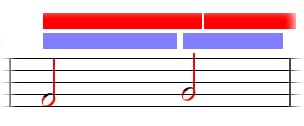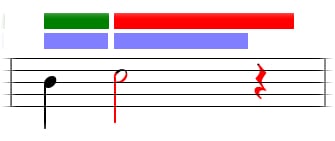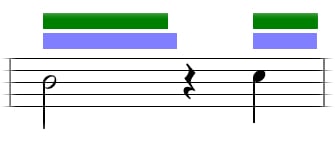(For instructions on accessing custom activities, see this page.)
Before you begin, select two adjacent keys on your computer keyboard or attached MIDI keyboard. You will alternate between these keys to play the indicated rhythm. (It doesn’t matter which two keys you choose—Practica Musica will automatically play the correct pitches. Just be sure you can move smoothly between the two keys you’ve chosen.)
At the start of each example, Practica Musica will begin “ticking” like a metronome; each click indicates a beat. If you’d like to slow down (or speed up) the tempo of the example, click the “Change Tempo” button and choose a smaller (or larger) number of beats per minute. (You can ignore the notes drawn under the tempo markings.)
Once you’re comfortable with the tempo, begin by counting a “measure for nothing” to be sure you have the tempo in your head. Then press the first of your chosen keys, and hold it for the full duration of the first note of the example. Then, for each successive note in the exercise, press the other of your two chosen keys; be sure to lift both keys for rests.
After you’ve completed each example, Practica Musica will evaluate your performance by comparing the rhythms you played (green and red blocks) to “perfect” rhythms (blue blocks). For example:
 |
In this example, the student started each note at the correct moment, but released the key too soon each time. This is usually caused by “pecking” at the keys with one finger, rather than alternating between two fingers as you would when playing a legato phrase. |
 |
The student held the first note of this example for slightly too long, which consequently caused the next note to enter late. |
 |
Similarly, for this example, the student played the first note correctly, but held the second note too long (into the rest). Remember to lift your hand off the key at the beginning of each rest to avoid this error. |
 |
In this example, the student played and released both notes within acceptable margins of error, and received full points. |
As you progress through this exercise, you will reach levels of increasing difficulty. (Individual sublevels within each main level will add challenges such as ties.)
- Level 1 tests only quarter and half notes and rests in



- Level 2 adds 8th, dotted, and whole notes and rests.
- Level 3 adds triplets and 16th notes.
- Level 4 adds more challenging time signatures. (Note that for compound time signatures, the metronome will click the main beat, not the subdivided beat—e.g., in


